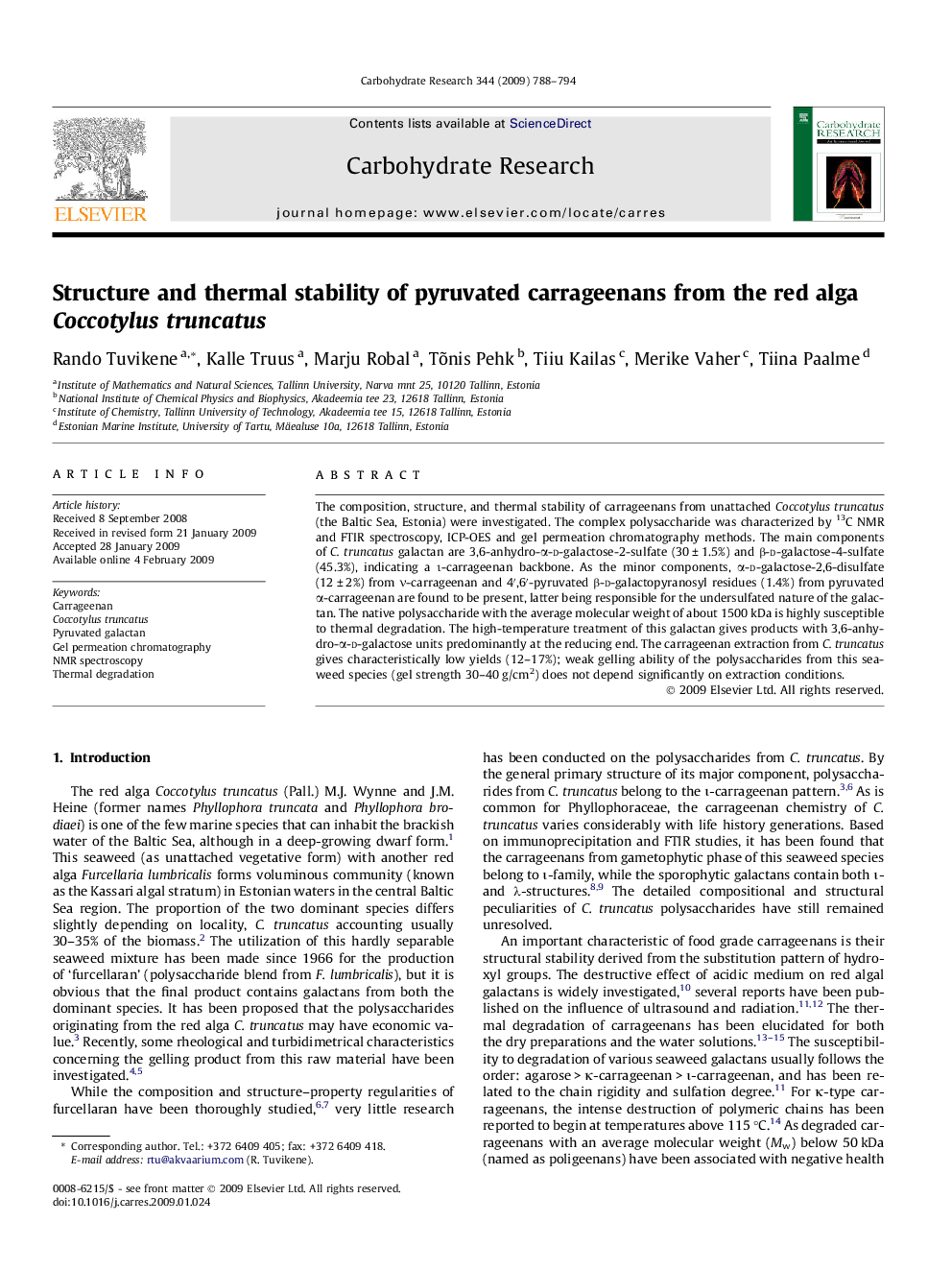| Article ID | Journal | Published Year | Pages | File Type |
|---|---|---|---|---|
| 1385024 | Carbohydrate Research | 2009 | 7 Pages |
The composition, structure, and thermal stability of carrageenans from unattached Coccotylus truncatus (the Baltic Sea, Estonia) were investigated. The complex polysaccharide was characterized by 13C NMR and FTIR spectroscopy, ICP-OES and gel permeation chromatography methods. The main components of C. truncatus galactan are 3,6-anhydro-α-d-galactose-2-sulfate (30 ± 1.5%) and β-d-galactose-4-sulfate (45.3%), indicating a ι-carrageenan backbone. As the minor components, α-d-galactose-2,6-disulfate (12 ± 2%) from ν-carrageenan and 4′,6′-pyruvated β-d-galactopyranosyl residues (1.4%) from pyruvated α-carrageenan are found to be present, latter being responsible for the undersulfated nature of the galactan. The native polysaccharide with the average molecular weight of about 1500 kDa is highly susceptible to thermal degradation. The high-temperature treatment of this galactan gives products with 3,6-anhydro-α-d-galactose units predominantly at the reducing end. The carrageenan extraction from C. truncatus gives characteristically low yields (12–17%); weak gelling ability of the polysaccharides from this seaweed species (gel strength 30–40 g/cm2) does not depend significantly on extraction conditions.
Graphical abstractFigure optionsDownload full-size imageDownload as PowerPoint slide
